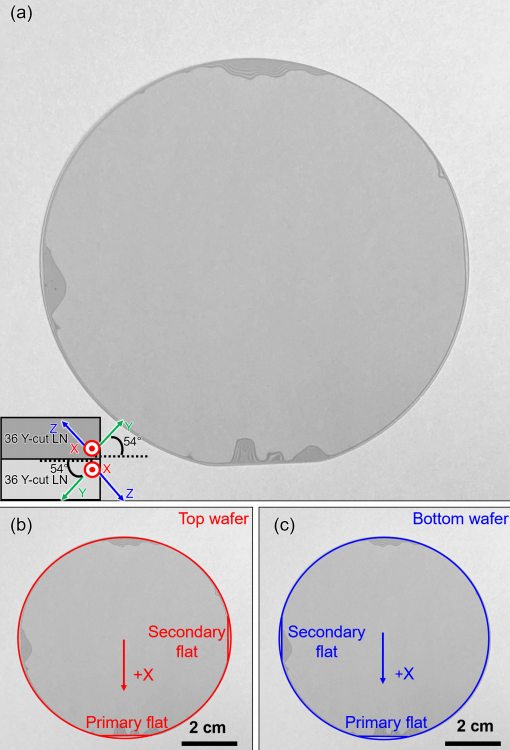
This paper presents a periodically poled piezoelectric film (P3F) thickness-extensional (TE) lithium niobate (LN) resonator for piezoelectric power conversion. The demand for compact and efficient power conversion systems has led to the exploration of piezoelectric power converters, where LN shows promise due to its high figure of merit (FoM=Q⋅k2).
The P3F structure, composed of stacked piezoelectric layers with alternating crystal orientations, overcomes the limitations of single-layer LN resonators, such as low resonance frequencies. The fabricated bi-layer P3F TE LN resonator operates at 19.23 MHz, with a large electromechanical coupling coefficient (k2) of 29% and a high quality factor (Q) of 3187, achieving a state-of-the-art (fs⋅Q) product among piezoelectric power resonators.
The design involves careful consideration of crystal orientation. The 36°Y LN is used for its high piezoelectric coefficient e33 in TE modes. In the P3F structure, the top and bottom layers have opposite polarities, which enables constructive charge buildup in symmetric even-order acoustic modes like the second-order antisymmetric (A2) mode, enhancing the performance. Finite element simulations validate the mode shapes, stress distributions, and impedance responses of the resonator design.
The wafer bonding process of the two 170 µm thick 36°Y-cut LN wafers is described in detail, including surface cleaning, treatment, alignment, and annealing, resulting in a high bonding quality. The resonator is fabricated using standard microfabrication techniques, with Pt electrodes deposited and patterned, and finally integrated onto an FR-4 PCB.
Electrical measurements show good performance, but also reveal in-band spurious modes. Thermal stability testing from 25°C to 150°C indicates that the device has a relatively stable performance, with a temperature coefficient of frequency (TCF) of -70.65 ppm/K. High-power testing up to 58 dBm is carried out to study the nonlinear behavior and power handling of the P3F LN resonator. The results show that the device fails at 58 dBm due to bonding damage and material fracture.
In conclusion, the P3F LN resonator shows great potential for next-generation piezoelectric power conversion, and with further optimization, it can enable more efficient and spurious-free operation in high-frequency, high-power applications.
OMeda (Shanghai Omedasemi Co.,Ltd) was founded in 2021 by 3 doctors with more than 10 years of experience in nanpfabrication. It currently has 15 employees and has rich experience in nanofabrication (coating, lithography, etching, two-photon printing, bonding) and other processes. We support nanofabrication of 4/6/8-inch wafers.